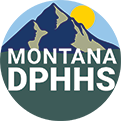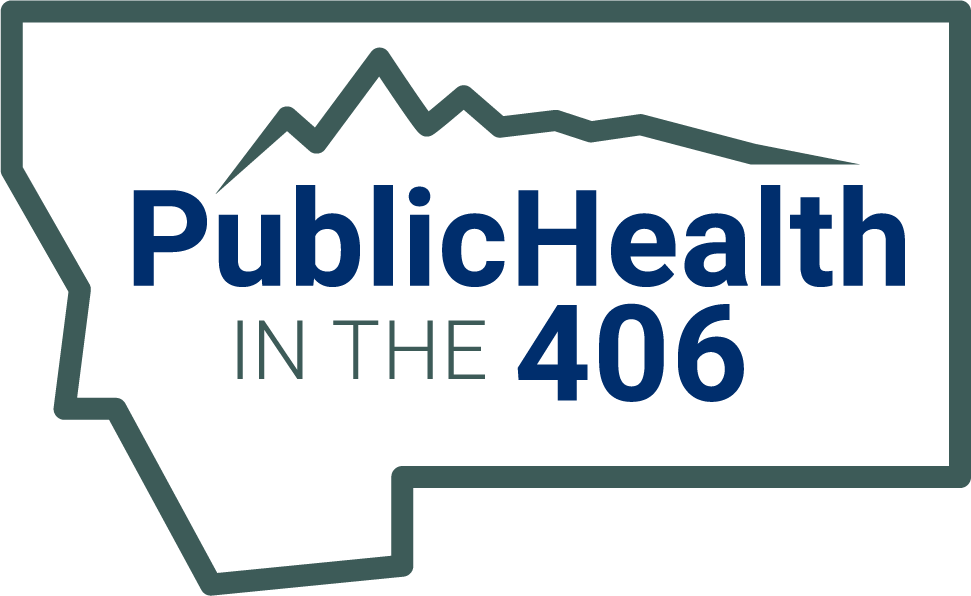Local and Tribal Support
Community Health Planning Process
Community Health Assessment (CHA) is a process that engages with community members and local public health system partners to systematically collect and analyze qualitative and quantitative health-related data from a variety of sources within a specific community. In other words, taking steps to understand the health status and health risk in a community using data from multiple sources.
Community Health Improvement Plan (CHIP) is an action-oriented plan outlining priority community health issues (based on the CHA and stakeholder input) and how these issues will be addressed, including strategies and measures, to ultimately improve the health of the community. In other words, working together as a community to address a health issue or issues.
Strategic Plan (SP) provides a health department and its stakeholders with a clear picture of where it is headed, what it plans to achieve, the methods by which it will succeed and the measures to monitor progress.
The planning requirements are outlined in the Public Health Accreditation Board (PHAB) Public Health Standards (Domains 1, 5, and 10) and IRS requirements for tax-exempt hospitals based on Section 501(r)(3) of the Patient Protection and Affordable Care Act.
- Montana Community Health Assessment Guide
Montana Department of Health and Human Services modifiable guide
This modifiable guide by the Montana Department of Health and Human Services can be used to understand the steps and processes needed to complete your community health assessment process. - Community Health Assessment Toolkit
American Hospital Association Community Health Improvement guide/toolkit
This toolkit from the American Hospital Association Community Health Improvement (ACHI) lays out a nine-step pathway for conducting a community health assessment and developing implementation strategies. - CHA-CHIP Timeline Template (DOC)
Minnesota Department of Health modifiable template
This modifiable template by the Minnesota Department of Health can be used to plan a timeline for your community health assessment and improvement planning process. - An Introduction to Community Assessment and Data Collection
Region IV Public Health Training Center webinar/course
This 40-minute self-paced course from the Region IV Public Health Training Center provides an introduction to community assessment, data collection, and sharing data findings. It is an introductory-level course designed to build competence in data analytics, assessment, and community engagement. - Data Request Process and Community Health Data Resources
Montana Department of Health and Human Services data resources
These PDFs provide an overview of how-to request MT DPHHS level data for your community assessment.
- CHA-CHIP Timeline Template (DOC)
Minnesota Department of Health modifiable template
This modifiable template by the Minnesota Department of Health can be used to plan a timeline for your community health assessment and improvement planning process. - Community Health Improvement Matrix (PDF)
National Association of County and City Health Officials (NACCHO) report/article
This matrix from the National Association of County and City Health Officials (NACCHO) can be used to classify potential interventions by prevention (primary to tertiary) and intervention (individual to public policy) levels. For additional information on how to use the resource, visit: The Community Health Improvement Matrix (PDF). - Gathering Information: Monitoring your Progress
Community Tool Box guide/toolkit
This Community Toolbox section provides information and resources for monitoring progress on community initiatives. - Indicator Criteria Matrix National Association of County and City Health Officials (NACCHO) modifiable template
This National Association of County and City Health Officials (NACCHO) editable matrix from Mobilizing for Action through Planning and Partnerships (MAPP) 2.0's Community Status Assessment supplementary tools can help users decide which indicators to include in the community health assessment and improvement plan. This resource is available in NACCHO's MAPP tool repository. To learn how to access NACCHO tools, visit: Instructions for the MAPP network (PDF). - Influencing Policy Development
Community Tool Box guide/toolkit
This Community Tool Box toolkit provides guidance and examples for bringing about policy change in organizations and communities. - Measuring Success: Evaluating Comprehensive Community Initiatives
Community Tool Box guide/toolkit
This Community Toolbox section provides information and step-by-step instructions for evaluating community initiatives. - Plan to Plan CHIP 1 - A Community Health Improvement Plan
Region V Public Health Training Center webinar/course
Part 1 of the 3 part webinar series (1 hour each) from Region V Public Health Training Center provides participants with the knowledge, tools, and resources needed to prepare for community health improvement planning within their communities. Participants will be introduced to the process of writing a community health improvement plan. This content is aligned with PHAB 1.5 standards and measures. - Plan to Plan CHIP 2 - Community Health Priorities
Region V Public Health Training Center webinar/course
Part 2 of the 3 part webinar series (1 hour each) from Region V Public Health Training Center focuses on health prioritization. The series provides participants with the knowledge, tools, and resources needed to prepare for community health improvement planning within their communities. Participants will be introduced to the process of writing a community health improvement plan. This content is aligned with PHAB 1.5 standards and measures. - Plan to Plan CHIP 3 - Writing your CHIP
Region V Public Health Training Center webinar/course
Part 3 of the 3 part webinar series (1 hour each) from Region V Public Health Training Center focuses on writing the community health improvement plan. The series provides participants with the knowledge, tools, and resources needed to prepare for community health improvement planning within their communities. This content is aligned with PHAB 1.5 standards and measures. - SMART Objectives (Evaluation Brief 3b) (PDF)
Centers for Disease Control and Prevention (CDC) fact sheet
This 2-page Centers for Disease Control and Prevention (CDC) brief includes an overview of SMART (specific, measurable, achievable, relevant, and time-bound) objectives, how to write them, a checklist, and examples. Community health improvement plans should contain SMART objectives. - Writing Meaningful Goals and SMART Objectives
Minnesota Department of Health webinar/course
This 35-minute webinar from the Minnesota Department of Health overviews writing meaningful goals and specific, measurable, attainable, relevant, and timely (SMART) objectives which may be used in a community health improvement plan.
- Strategic Plan Template
Public Health Accreditation Board (PHAB)
This template by PHAB can be used to complete a strategic plan. A user guide and how-to video can help walk you through the process. - Contact Us
Montana Department of Health and Human Services Public Health System Improvement Office
The PHSIO is here to help support you in completing a strategic plan.
Additional Resources
- 10 - Engaging People with Lived/Living Experience
Alison Homer, Tamarack Institute case study, guide/toolkit
This guide by Alison Homer was written to support poverty-reduction groups to meaningfully engage people with lived/living experience. It highlights new practices and thinking, ideas that can be applied for any health priority issue a community is seeking to address. - 101 on One-to-Ones Quick Guide (PDF) and Participant Guide (PDF)
University of Minnesota, adapted from Jewish Community Action guidance
This activity created by Annette Shepardson from the University of Minnesota Extension encourages participants to practice having one-to-one conversations in which they listen carefully to understand and, through that understanding, build strong relationships. - Circles of Involvement Exercise (PDF)
National Association of County and City Health Officials (NACCHO)
facilitated group activity
This 45-minute small group exercise from the National Association of County and City Health Officials (NACCHO) involves several steps to identify the public health system and community partners that should be involved in the Mobilizing for Action through Planning and Partnerships (MAPP) process, separating them out into circles of involvement. Requires utilization of this resource as well: Local Assessment Instrument: National Public Health Performance Standards(PDF). - Conducting Focus Groups
Community Tool Box guide/toolkit
This Community Tool Box section covers how to plan, prepare, conduct, and use focus group results to receive qualitative data for deeper understanding of community issues. - Conducting Key Informant Interviews
Community Tool Box guide/toolkit
This Community Toolbox section covers how to prepare for, conduct, and use information from key informant interviews. - EHDI Focus Group Training
Rainbow Research webinar/course
This 1 hour 15 minute webinar from Rainbow Research discusses how to plan for, conduct, and analyze data from focus groups. - Establishing Strong, Sustainable, Cross-Sector Collaborations
de Beaumont Foundation case study, guide/toolkit
This de Beaumont Foundation webpage provides key actions to establishing strong, sustainable cross-sector collaborations using a case study of a North Carolina health department. - Health in all policies: A guide for state and local governments
Public Health Institute guide/toolkit
This Public Health Institute guide provides direction and action steps for state and local government public health leaders who are interested in working with non-traditional health partners like housing, transportation, education, air quality, parks, criminal justice, energy, and employment agencies on Health in All Policies. - Identifying Interested Parties (DOC)
Minnesota Department of Health modifiable template
This Minnesota Department of Health template assists users to identify people and groups who may have an interest in your community health assessment and planning process. - Meaningfully Engaging Youth
Tamarack Institute guide/toolkit
This Tamarack Institute guide was co-developed with youth leaders and representatives from youth-serving organizations to shine a light on the principles and practices that lead to meaningful youth engagement. - Monitoring Collaboration Tool
Tamarack Institute guide/toolkit
This six-page tool from the Tamarack Institute is designed to help users monitor and assess the quality of a group's collaboration. Use of this tool will encourage participants to reflect on their process and groups dynamics and share perspectives on how to improve their collaboration. - Public Health Reaching Across Sectors (PHRASES)
de Beaumont Foundation, Aspen Institute guide/toolkit
Evidence-based framing and messaging tools and strategies to help public health professionals communicate across sectors, from de Beaumont Foundation and The Aspen Institute. - Community Engagement Assessment Tool
Nexus Community Partners assessment
This Nexus Community Partners tool helps organizations improve their community engagement efforts by assessing their activities on a scale from outreach to engagement. - Public Participation Spectrum (PDF)
International Association for Public Participation
This International Association for Public Participation graphic outlines the spectrum of public participation from informing to empowering, an important consideration for engaging partners in the community health assessment and community health improvement process. - Work Together Guide
County Health Rankings and Roadmaps guide/toolkit
This County Health Rankings and Roadmaps toolbox for collaboration includes 9 key activities and multiple tools for recruiting diverse partners, managing boundaries, building relationships, building a common knowledge base, developing a vision, values, and a mission, determining organizational structure, developing leadership capacity, and reinforcing healthy partnership practices.
- Communications Plan (DOC)
Minnesota Department of Health modifiable template
This Minnesota Department of Health resource provides a template for systematically planning and executing communications regarding your community health assessment and planning process. - Effective Communication
Windsor-Essex County Health Unit guide/toolkit
This 4-page excerpt (start on p. 14) from Windsor-Essex County Health Unit's toolkit, No barriers, health equity for all: Toolkit and practical guide for health and community service providers identifies strategies for communicating about health equity and social determinants of health. It describes the importance of inclusive language, guidelines for effective communication, and alternative ways to describe health equity for different audiences. - Public Health Reaching Across Sectors (PHRASES)
de Beaumont Foundation, Aspen Institute guide/toolkit
Evidence-based framing and messaging tools and strategies to help public health professionals communicate across sectors, from de Beaumont Foundation and The Aspen Institute.
- Analyzing Qualitative Data for Evaluation (Evaluation Brief 19 (PDF)
Centers for Disease Control and Prevention (CDC) fact sheet
This 2-page Centers for Disease Control and Prevention (CDC) brief includes an overview of qualitative data, how to plan for qualitative data analysis, how to analyze qualitative data, and the advantages and disadvantages of qualitative data. - Checklist to Evaluate the Quality of Questions (Evaluation Brief 15) (PDF)
Centers for Disease Control and Prevention (CDC) fact sheet
This 2-page Centers for Disease Control and Prevention (CDC) checklist of the Question Appraisal System (QAS-99) is a method for identifying and fixing miscommunication and other types of problems with questionnaire (survey) questions. - Community Assessment: Conducting Surveys
Region IV Public Health Training Center webinar/course
This 45-minute self-paced course from the Region IV Public Health Training Center provides an introduction to planning for and conducting community surveys and analyzing and disseminating survey data for community assessment. It is an introductory-level course designed to build competence in data analytics, assessment, and community engagement. - Community Assessment: Conducting Windshield and Walking Surveys
Region IV Public Health Training Center webinar/course
This 40-minute self-paced course from the Region IV Public Health Training Center introduces the components of windshield and walking surveys, explains the data collection and analysis process, and discusses how observational data can be used to inform subsequent phases of the community assessment. - Community Walking Assessment Quick Guide (PDF), Participant Guide (PDF), and Presentation Slides (PPT)
University of Minnesota Extension assessment, facilitated group activity
The Community Walking Assessment from the University of Minnesota Extension is a guide for assessing community environments and identifying how these environments support or hinder healthy lifestyles. Resources include a PowerPoint describing the walking assessment process and providing discussion/reflection questions, a participant guide (a worksheet to be filled out during the assessment), and a facilitator-focused quick guide. - Conducting Focus Groups
Community Tool Box guide/toolkit
This Community Tool Box section covers how to plan, prepare, conduct, and use focus group results to receive qualitative data for deeper understanding of community issues. - Conducting Key Informant Interviews
Community Tool Box guide/toolkit
This Community Toolbox section covers how to prepare for, conduct, and use information from key informant interviews. - Creating Dynamic Presentations (Guide)
Northwest Center for Public Health Practice video
This series of short videos from the Northwest Center for Public Health Practice presents information on how to design a presentation that will engage your audience and clearly deliver your message. Note: you must create a free PH LearnLink account to access the videos. - Data Collection Methods for Program Evaluation: Interviews (Evaluation Brief 17) (PDF)
Centers for Disease Control and Prevention (CDC) fact sheet
This 2-page Centers for Disease Control and Prevention (CDC) brief includes a basic overview of interviews, when to use them, how to plan and conduct them, and their advantages and disadvantages. - Data Issues in Jurisdictions with Small Populations (Tip Sheet) (DOC)
National Association of County and City Health Officials (NACCHO) fact sheet
This 2-page National Association of County and City Health Officials (NACCHO) document includes tips for data collection and interpretation for small populations. - Data Visualization Tips
GeckoBoard report/article
This GeckoBoard webpage provides tips and best practices for data visualization, including how to avoid distorting data. - Data: Quality, Analysis, and Interpretation
Minnesota Department of Health guide/toolkit
This section of the Minnesota Department of Health's Quality Improvement (QI) toolbox includes information on finding county level data, evaluating data quality, and basics regarding data interpretation and presentation. - EHDI Focus Group Training
Rainbow Research webinar/course
This 1 hour 15 minute webinar from Rainbow Research discusses how to plan for, conduct, and analyze data from focus groups. - Increasing Questionnaire Response Rates (Evaluation Brief 21) (PDF)
Centers for Disease Control and Prevention (CDC) fact sheet
This 2-page Centers for Disease Control and Prevention (CDC) brief describes the importance of boosting questionnaire (survey) response rates to increase the validity and usefulness of results. It includes an explanation of response rates and strategies to increase them. - Indicator Criteria Matrix
National Association of County and City Health Officials (NACCHO) modifiable template
This National Association of County and City Health Officials (NACCHO) editable matrix from Mobilizing for Action through Planning and Partnerships (MAPP) 2.0's Community Status Assessment supplementary tools can help users decide which indicators to include in the community health assessment and improvement plan. This resource is available in NACCHO's MAPP tool repository. To learn how to access NACCHO tools, visit: Instructions for the MAPP network (PDF). - Information Gathering Methods for Engaging the Community and Gathering Feedback (PDF)
Minnesota Department of Health fact sheet
This document by Jamie Thompson (adapted from Minnesota Public Health Corps and National Association of County and City Health Officials materials) features a table with descriptions of various data gathering methods for assessment or community feedback. - An Introduction to Community Assessment and Data Collection
Region IV Public Health Training Center
webinar/course
This 40-minute self-paced course from the Region IV Public Health Training Center provides an introduction to community assessment, data collection, and sharing data findings. It is an introductory-level course designed to build competence in data analytics, assessment, and community engagement. - Qualitative Methods in Public Health Practice Course
Region V Public Health Training Center webinar/course
This free Region V Public Health Training Center course provides an overview of qualitative research methods, including common study designs, processes for data management, and considerations for interpreting findings. Module 1 is 20 minutes, module 2 is 20 minutes, and module 3 is 40 minutes. - Secondary Data Resources
National Association of County and City Health Officials (NACCHO)
This excel sheet of secondary data sources from National Association of County and City Health Officials (NACCHO) can help users find secondary data for their community health assessment and community health improvement plan. It includes descriptions, focus areas, time period for updates, and level of availability (state, county, city, zip code, district, tribal). This resource is available in NACCHO's MAPP tool repository. To learn how to access NACCHO tools, visit: Instructions for the MAPP network (PDF). - Using Electronic Health Data for Community Health (PDF)
de Beaumont Foundation report/article
This report from de Beaumont Foundation and Johns Hopkins Bloomberg School of Public Health sets out examples of how a public health agency might use electronic health data to make progress on a health priority, in this example, childhood asthma. - Using Incentives to Boost Response Rates (Evaluation Brief 22) (PDF)
Centers for Disease Control and Prevention (CDC) fact sheet
This 2-page Centers for Disease Control and Prevention (CDC) brief focuses on how using incentives can help increase questionnaire (survey) response rates. It explains why and when incentives should be used, types of incentives, and other considerations. - Using Ordered Response Options to Collect Evaluation Data (Evaluation Brief 23)
Centers for Disease Control and Prevention (CDC) fact sheet
This 2-page Centers for Disease Control and Prevention (CDC) brief focuses on using ordered response options in surveys. It includes the definition, how to create good sets of options, how to analyze and present the data collected; and advantages and disadvantages.
- Focus on What's Important
County Health Rankings and Roadmaps guide/toolkit
This County Health Rankings and Roadmaps webpage lays out in-depth steps and tools for prioritizing health issues. - Prioritization Techniques (Guide) (PDF)
National Association of County and City Health Officials (NACCHO) guide/toolkit
This National Association of County and City Health Officials (NACCHO) document describes five widely used options for prioritization including guidance on which technique best fits the needs of your agency, step-by-step instructions for implementation, and practical examples. - Sample Indicator Prioritization Matrices
National Association of County and City Health Officials (NACCHO)
This editable indicator prioritization matrix from the National Association of County and City Health Officials (NACCHO) Mobilizing for Action through Planning and Partnerships (MAPP) 2.0's tool repository can be used in the process of determining community health priorities. To learn how to access NACCHO tools, visit: Instructions for the MAPP network (PDF).






